MSI K8N Neo3-FSR Review
MSI K8N Neo3-FSR
MSi's K8N Neo3-FSR solves the thorny issue of how to cost effectively upgrade to a PCI Express based nForce4 system. Leo Waldock takes a closer look.

Verdict
Key Specifications
- Review Price: £61.00
You can imagine the conversations that went on at MSI as it developed its new budget Athlon 64 motherboard, the MSI K8N Neo3-F.
The Head of Marketing called his people together. “Boys’, he said ‘I’m happy with our products at the high-end of the Socket 939 Athlon 64 market and we’ve also got it covered at the high-end with our K8N Neo4 Platinum (£105) and SLI (£149) models, using the nForce4 Ultra and SLI chipsets respectively. We’ve also catered for the integrated graphics market with the new ATi Radeon XPRESS 200 in the RS480M2-IL. Socket 939 is looking good for MSI.’
‘Hubba hubba’ his Marketing Men cried.
‘But Boys’ he went on, ‘I’m not pleased with our Socket 754 motherboards. We’ve done well coming up with an nVidia nForce3 model which sells for £70 and VIA K8T800/K8M800 models which go for less than £55, but you’ve missed a trick. You’ve forgotten that Socket A will be terminated very soon and that Windows XP 64-bit is about to be launched next month. A number of enthusiasts will be making the move to Athlon 64 so they want the latest chipset, but they also want an easy upgrade where they buy a new processor but keep their original graphics card and memory.

Here’s what I want. I want a budget Socket 754 nForce4 design that sells for less than our nForce3 model, and it has to support AGP graphics. Aim for a UK price of £60. Now get out and close the door behind you.’
The Marketing team had no idea what to do so they took the problem to the Engineers who looked at the nForce4 to try and figure out how you could add AGP graphics to a PCI Express chipset at no cost whatsoever. And you know what, they cracked the problem.
The K8N Neo3-F measures 295mm x 185mm, so it is nearly as long as a regular ATX motherboard but is 60mm narrower than usual, which means that it has ten percent less surface area than a micro-ATX model, which would typically measure 245mm x 245mm. A smaller motherboard is cheaper to produce, but tend to suffer from a lack of space in which to fit the various connectors. Surprisingly the K8N Neo3-F manages to cram in plenty of features, although it only has two memory slots making for a current practical limit of 1GB of system memory. The two ATA133 connectors are arranged along one edge of the motherboard and below them are the four native SATA connectors, which have NV RAID that covers all four ports.
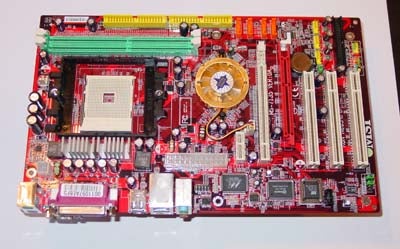
The floppy connector at the foot of the board is in a slightly awkward position, and around it are the various headers although MSI also includes a D-bracket in the package that adds diagnostic LEDs and two USB 2 ports, giving a total of six USB ports. The connectors for the front panel switches and lights are colour coded and labelled just as you would hope, when many motherboard manufacturers don’t bother.
As you would expect with an nForce design the main ATX connector is a 24-pin item, and MSI has managed to give both it and the four-pin 12V connector plenty of space to make it simple to connect your power supply.
And so we come to the main point of interest; the expansion card slots. At the top is a single x1 PCI Express slot, then a x16 PCI-E graphics slot, and then an AGP 3.0 slot with retention device. Below that are three regular PCI slots. MSI has realised that every PCI Express motherboard will only have two or three PCI slots, and that leaves a fair chunk of system resources free for what it terms an Accelerated Graphics Riser, or AGR. The AGR is effectively identical to an AGP 3.0 slot except that it has a significantly slower connection speed than AGP, so even though MSI has published a list of compatible graphics cards which includes a WinFast 6800GT and ATi Radeon 9700, it’s only part of the story.
www.msi.com.tw/html/products/mainboard/agr/7135agr.pdf
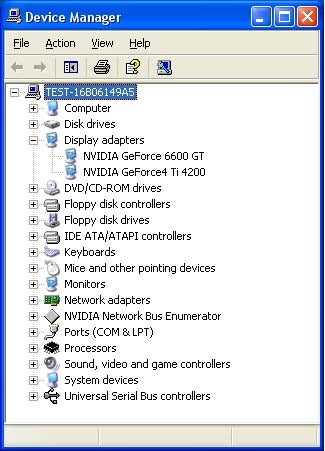
We tested the K8N Neo3-F using an Athlon 64 3200+ CPU with 1GB of Corsair PC3200 memory with both PCI Express and AGP versions of the 6600GT on Detonator 71.40 drivers with the core running at 500MHz and the memory at 1GHz. The results were eye-opening, and in Doom3 with no FSAA the PCI-E card scored 69.7fps and the AGR version got 24.6fps. We tried a few test runs with an AGP Ti4600 and it suffered a performance hit of around ten percent compared to an nForce3 native AGP motherboard, so there’s no doubt AGR isn’t as good as AGP.
But that’s not the point.
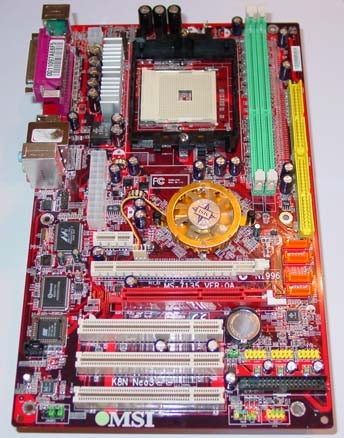
MSI is using AGR to avoid the awful Intel 915/925X situation where you have to buy a new motherboard, processor, memory and graphics card in one huge, expensive bundle. With the MSI K8N Neo3-F you can buy a new processor and motherboard for about £200 and if you have an old MX440 or similar, you won’t even notice a performance drop. When you have the necessary £150 it’s time for a 6600GT and your upgrade is complete and you have the same performance as a regular nForce4 motherboard. Incidentally, system performance is impressive. We ran SYSmark 2002 and got 286 marks, and in PCMark04 we got 3,554 marks, which is very acceptable for a budget PC.
By any standards this is a budget motherboard that relies on the chipset features, and fortunately, nForce4 is a very good chipset. The MSI K8N Neo3-F however, doesn’t have the hardware Firewall that is included with nForce4 Ultra. The ports on the backplate are a little limited – there’s no Firewire for example – and the Realtek ALC655 audio only has three mini jacks with no option of digital output.
The Phoenix 6 BIOS gives you a decent range of options to adjust memory timings, and the Core Cell Menu also enables you to alter CPU and Hyper Transport timings, as well as memory and chipset voltages.
”’Verdict”’
MSI has come up with a decent budget nForce4 motherboard, but the icing on the cake is its AGR technology, which is a clever idea that will help you delay the move from AGP to PCI Express graphics.
(table:ft3)
Test System Spec:
”’Athlon 64 3200+ CPU,”’
”’1GB of Corsair PC3200 memory”’
”’PCI Express and AGP nVidia GeForce 6600GT, (500MHz core, 1GHz memory)”’
”’Detonator 71.40 drivers.”’
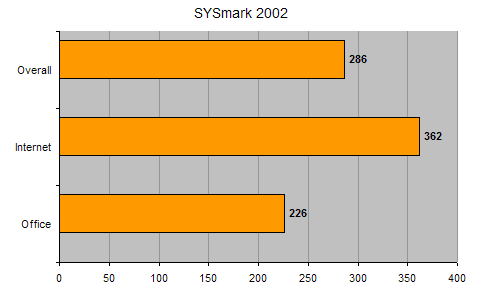
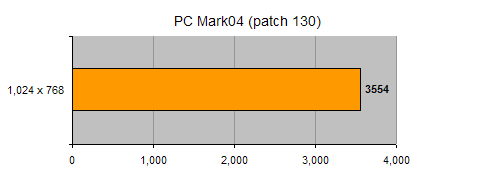
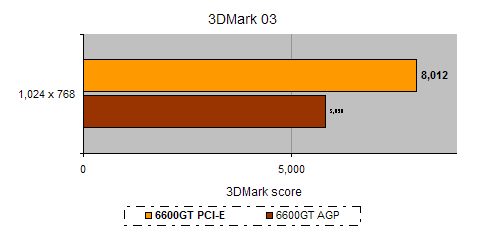
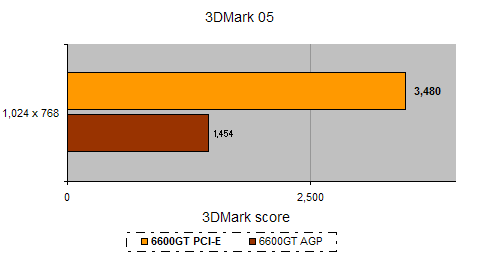
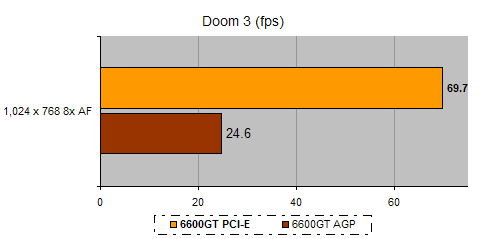
Trusted Score
Score in detail
-
Value 9
-
Performance 7

